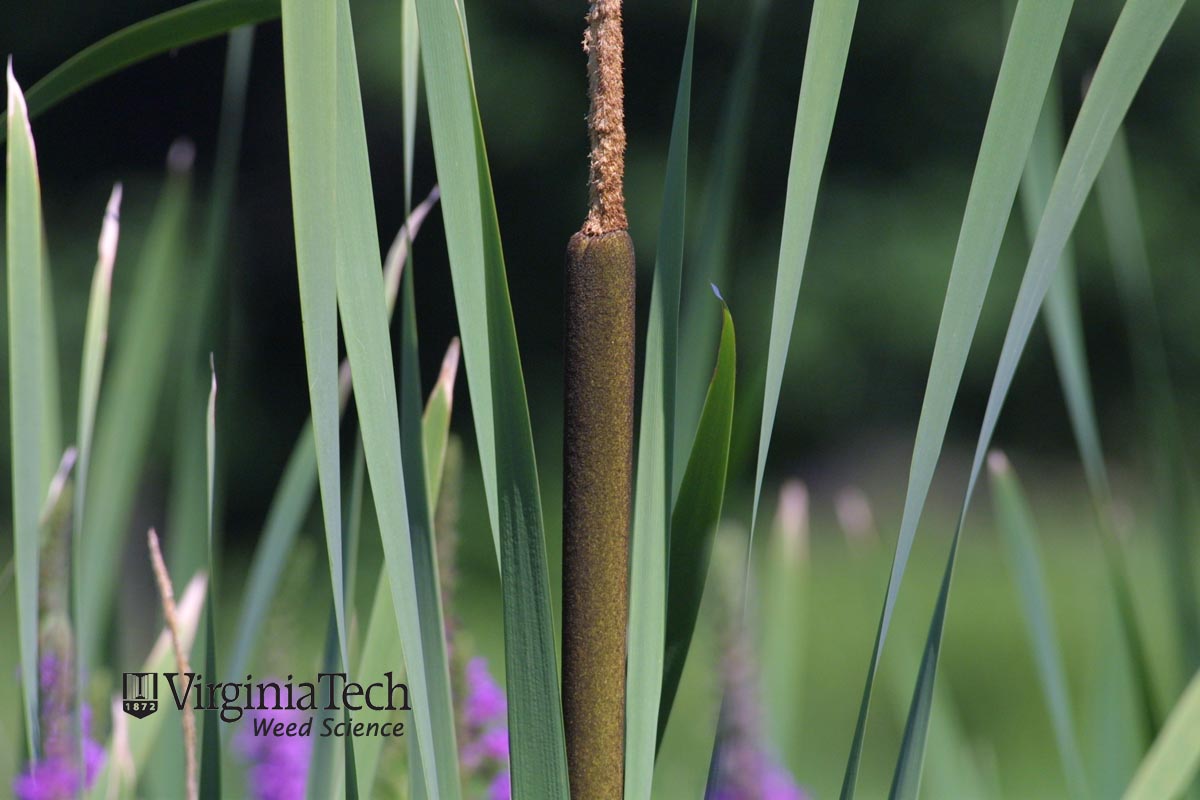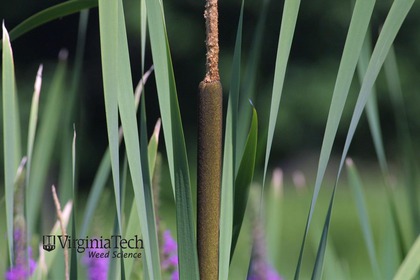broadleaf cattail
Family
TyphaceaeScientific Name
Typha latifoliaOther Common Names:
common cattail
cat of nine tails
great reedmace
cattail
cumbungi
common bulrush
cooper's reed
Habit
Common cattails are a familiar sight along the shore of any marsh, pond, lake, or river. They can even be found in ditches.
Leaves
Leaves are erect and blade-like, greater than 1/2 in wide.
Identifying Characteristics
Cattails are very important for many animals. They provide a place for the red-winged blackbird to build a nest to hide their young, a place for fish to hide or nest under the water, and a food source for young ducklings and muskrats. Cattails also give humans many products. Their starchy rhizomes (a horizontal root-like stem that sends out roots and leaves) are ripe for eating in fall and winter, all you have to do is peel and cook them like potatoes. Similar to narrow-leaf cattail, but with broader leaves.
Flower Seed Head
Its flower structure has a dense, dark brown, cylindrical spike on the end of a stout, 3'-10' stem. The staminate (male) portion is positioned above the pistillate (female) portion; they are continuous or slightly separated. Male flower is brown, minute, 3/16 -1/2 long, thickly clustered on a club-like spadix; anthers 1mm-3 mm long Female flower is tiny, 2mm-3mm long, when in flower, 10mm-15mm (3/8 -5/8 in) when in fruit. Female fruiting are pale green when in flower, drying to brownish, later blackish brown or reddish brown, in fruit, often mottled with whitish patches of pistil-hair tips.
Seed Fruit
Common Cattail has a tiny fruit with tufted nutlet. Seeds are minute, and numerous.
Where Found
They can be found throughout the US.
Leaf Hair on Upper Surface
Varies:
no hairs,
hairs from base to tip,
hairs on basal half only
Leaf Arrangement
rolled in bud
Mature Leaf Width
Varies:
6 to 15 mm,
more than 15 mm
Stem
flat or oval
Seedhead
spike
Root Structure
fibrous
Life Cycle
perennial
Auricle
present
Ligule
none
Ligule Length
none
Plant Type
Grass-like








